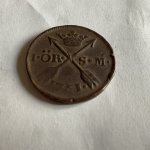Reg
Full Member
- Aug 10, 2007
- 125
- 111
- Detector(s) used
- White's TDI, TDI SL, GMT, GM 4, MXT, Tesoro LST, Lobo, Bandido, Vaquero, Sidewinder, Fisher GB 2, GB SE, F75 LTD Camo, Minelab SD 2200, XT18000, Discovery Goldtrax, Cointrax, and too many others
- Primary Interest:
- All Treasure Hunting
Hi guys,
Since it appeared part of the Infinium post was being taken over by questions about the TDI, I felt it best to move some info about the three different TDI models to this thread. Hope you don't mind.
First of all, there is basically no difference in the design of the sensitivity of the three detectors mentioned. The TDI and the TDI pro differ basically in a few basic features which are; The pro has a vernier ground balance added, it also has a volume control, and last, there is a slight filter change that makes small gold a little more obvious in signal. Keep the sweep speed slow on the regular TDI and small gold sensitivity is basically the same as the Pro. Unfortunately, most people sweep too fast.
The SL design is basically the same as the the other two but has one more added feature that minimizes noise. This feature wasn't available when the TDI came out but was thought of later. That is why it isn't on the TDI or the Pro.
If you look in the latest White's catalog, you will notice the regular TDI is no longer listed. Instead, the SL sales have been sufficient that the TDI will be or now is no longer made.
The SL loses a little depth when compared head to head with the TDI or the Pro, but as many have mentioned is much quieter and more stable and this is much more comfortable to the ears. This depth loss is the result of a lower voltage used. The TDI and the Pro use 14.8v Li Ion batteries while the SL uses 12V Alkaline or about 9.6V Ni Mh types. A third party 12V Li Ion pack is available which boosts the voltage a little over the factory rechargeable battery systems and provides a longer run time.
In theory, the SL could run on the same voltage is the TDI, but a different battery pack would be needed. I suspect the third party pack could be modified and hold 4 batteries, but the cost would be significant and most likely will not happen.
Along similar lines, a lighter battery pack could be used on the regular TDI and Pro, by cutting the battery presently in half and only using 4 batteries (equipped with the protection device). Obviously, the run time would be considerably less, thus requiring a more frequent change of batteries, but it would be lighter. I have done this so I know it works.
Reg
Since it appeared part of the Infinium post was being taken over by questions about the TDI, I felt it best to move some info about the three different TDI models to this thread. Hope you don't mind.
First of all, there is basically no difference in the design of the sensitivity of the three detectors mentioned. The TDI and the TDI pro differ basically in a few basic features which are; The pro has a vernier ground balance added, it also has a volume control, and last, there is a slight filter change that makes small gold a little more obvious in signal. Keep the sweep speed slow on the regular TDI and small gold sensitivity is basically the same as the Pro. Unfortunately, most people sweep too fast.
The SL design is basically the same as the the other two but has one more added feature that minimizes noise. This feature wasn't available when the TDI came out but was thought of later. That is why it isn't on the TDI or the Pro.
If you look in the latest White's catalog, you will notice the regular TDI is no longer listed. Instead, the SL sales have been sufficient that the TDI will be or now is no longer made.
The SL loses a little depth when compared head to head with the TDI or the Pro, but as many have mentioned is much quieter and more stable and this is much more comfortable to the ears. This depth loss is the result of a lower voltage used. The TDI and the Pro use 14.8v Li Ion batteries while the SL uses 12V Alkaline or about 9.6V Ni Mh types. A third party 12V Li Ion pack is available which boosts the voltage a little over the factory rechargeable battery systems and provides a longer run time.
In theory, the SL could run on the same voltage is the TDI, but a different battery pack would be needed. I suspect the third party pack could be modified and hold 4 batteries, but the cost would be significant and most likely will not happen.
Along similar lines, a lighter battery pack could be used on the regular TDI and Pro, by cutting the battery presently in half and only using 4 batteries (equipped with the protection device). Obviously, the run time would be considerably less, thus requiring a more frequent change of batteries, but it would be lighter. I have done this so I know it works.
Reg
Amazon Forum Fav 👍
Upvote
0





